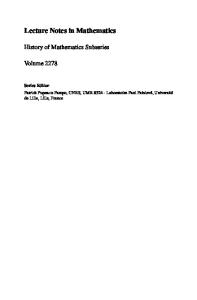Icelandic Morphosyntax and Argument Structure
This book provides a detailed study of Icelandic argument structure alternations within a syntactic theory of argument structure. Building on recent theorizing within the Minimalist Program and Distributed Morphology, the author proposes that much of what
- PDF / 7,921,559 Bytes
- 334 Pages / 453.543 x 683.15 pts Page_size
- 41 Downloads / 349 Views
Jim Wood
Icelandic Morphosyntax and Argument Structure
Studies in Natural Language and Linguistic Theory VOLUME 90
Managing Editors Marcel den Dikken, City University of New York, USA Liliane Haegeman, University of Ghent, Ghent, Belgium Joan Maling, Brandeis University, Waltham, USA Maria Polinsky, Harvard University, Cambridge, USA
Editorial Board Guglielmo Cinque, University of Venice, Italy Carol Georgopoulos, University of Utah, Salt Lake City, USA Jane Grimshaw, Rutgers University, New Brunswick, USA Michael Kenstowicz, Massachusetts Institute of Technology, Cambridge, USA Hilda Koopman, University of California, Los Angeles, USA Howard Lasnik, University of Maryland, College Park, USA Alec Marantz, Massachusetts Institute of Technology, Cambridge, USA John J. McCarthy, University of Massachusetts, Amherst, USA Ian Roberts, University of Cambridge, UK
More information about this series at http://www.springer.com/series/6559
Jim Wood
Icelandic Morphosyntax and Argument Structure
123
Jim Wood Department of Linguistics Yale University New Haven, CT USA
ISSN 0924-4670 ISBN 978-3-319-09137-2 DOI 10.1007/978-3-319-09138-9
ISSN 2215-0358 (electronic) ISBN 978-3-319-09138-9 (eBook)
Library of Congress Control Number: 2014945356 Springer Cham Heidelberg New York Dordrecht London © Springer International Publishing Switzerland 2015 This work is subject to copyright. All rights are reserved by the Publisher, whether the whole or part of the material is concerned, specifically the rights of translation, reprinting, reuse of illustrations, recitation, broadcasting, reproduction on microfilms or in any other physical way, and transmission or information storage and retrieval, electronic adaptation, computer software, or by similar or dissimilar methodology now known or hereafter developed. Exempted from this legal reservation are brief excerpts in connection with reviews or scholarly analysis or material supplied specifically for the purpose of being entered and executed on a computer system, for exclusive use by the purchaser of the work. Duplication of this publication or parts thereof is permitted only under the provisions of the Copyright Law of the Publisher’s location, in its current version, and permission for use must always be obtained from Springer. Permissions for use may be obtained through RightsLink at the Copyright Clearance Center. Violations are liable to prosecution under the respective Copyright Law. The use of general descriptive names, registered names, trademarks, service marks, etc. in this publication does not imply, even in the absence of a specific statement, that such names are exempt from the relevant protective laws and regulations and therefore free for general use. While the advice and information in this book are believed to be true and accurate at the date of publication, neither the authors nor the editors nor the publisher can accept any legal responsibility for any errors or omissions that may be made. The publisher makes no warranty, express or implied, with respect to t
Data Loading...











